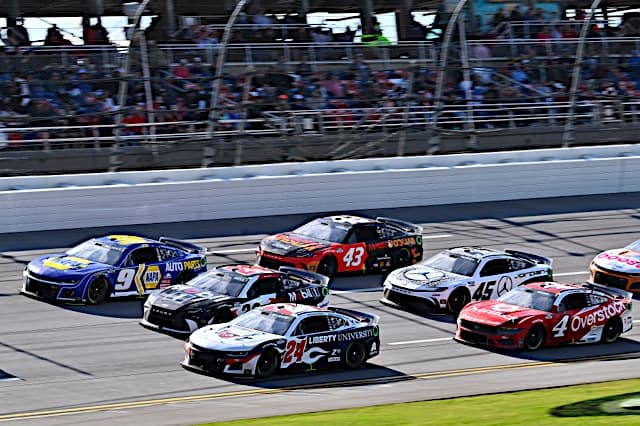It almost sounds blasphemous. Talladega Superspeedway, NASCAR’s biggest, baddest and widest oval, a track synonymous with action, thrills and three-wide pack racing, has become a battle of track position.
With the Next Gen car, that’s exactly what Talladega has become.
Last Sunday’s (April 21) GEICO 500 featured a whopping 72 lead changes, the most in any NASCAR Cup Series race since 2011. That’s an incredible number on paper, but simply watching the race would show that the number was heavily inflated by the field running half-throttle to conserve fuel.
The first two stages of Sunday’s 188-lap, 500-mile event almost looked cartoonish, as cars were running in a three-wide formation while slowing to as much as five seconds off the pace. Ross Chastain worked his way from 32nd to second in just four laps because no one was going 100% throttle, while BJ McLeod went from starting shotgun on the field to taking the lead by lap 10.
Having a three-wide pack may look aesthetically pleasing to the viewers and the fans in attendance, but it’s not real. It’s like watching traffic.
Chastain and McLeod were effectively running late to their jobs in uptown Charlotte at the start of the race, so they were weaving in and out of morning rush hour traffic on Interstate 77 at 80 mph as they made their way to the office. Meanwhile, all the other drivers were in no rush, and they were content with running the speed limit and taking it easy as they inched closer and closer to the skyscrapers in the distance.
Why was there the urge to take it easy? The fuel saving. With the first two stages being 60 laps apiece, drivers could not make it to the end of the stage on one tank. They had pit once under green, and that led to drivers backing off and saving as much fuel as possible so that they would emerge with the race lead or the best track position possible at the conclusion of the green flag pit cycle.
Could shortening the first two stages so that drivers could go the distance on one tank deter the amount of fuel saving that we saw on Sunday? It would give everyone the same opportunity to fill up, and drivers would theoretically be incentivized to go all out with the 10 stage points and one playoff point on the line. That may not be a perfect fix, however, as some drivers running toward the back may elect to save fuel under green so that they could leapfrog the leaders under the stage caution by taking less fuel on pit…
Click Here to Read the Full Original Article at …

